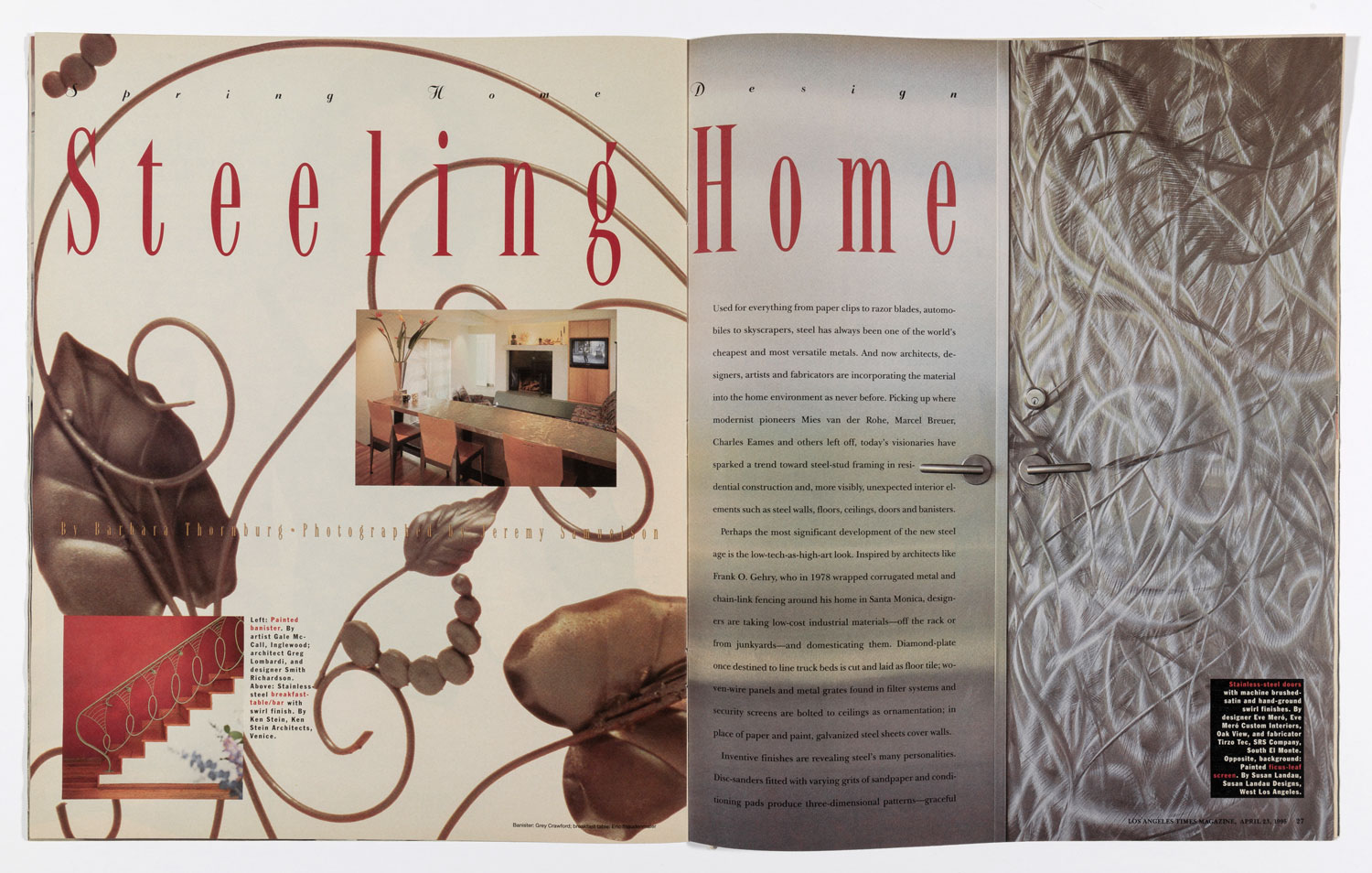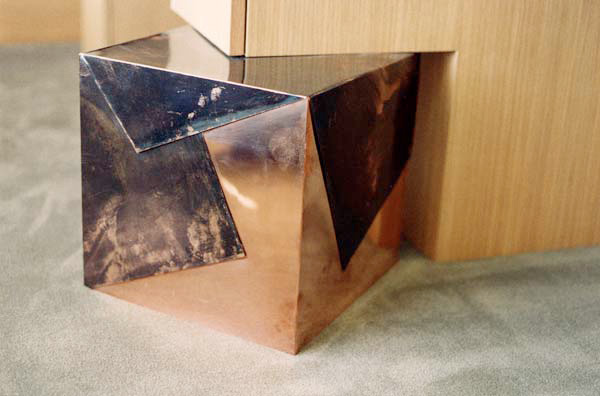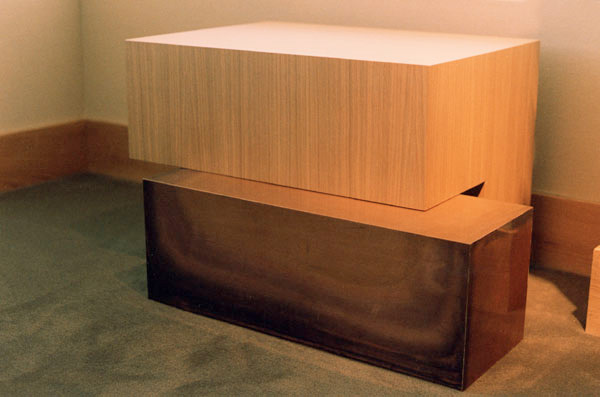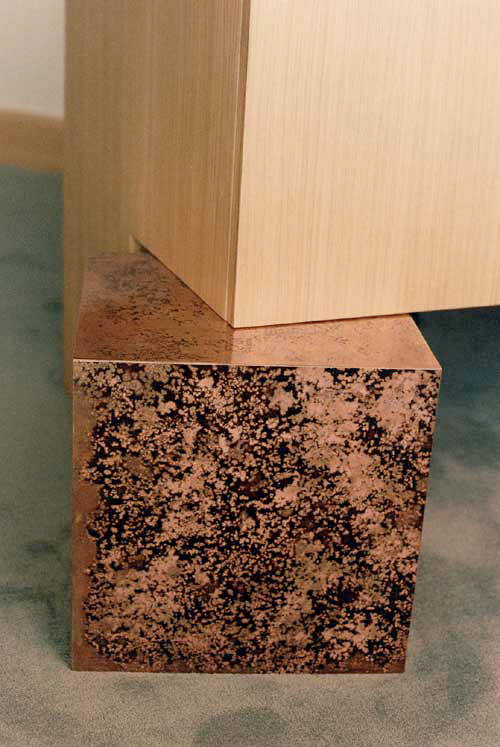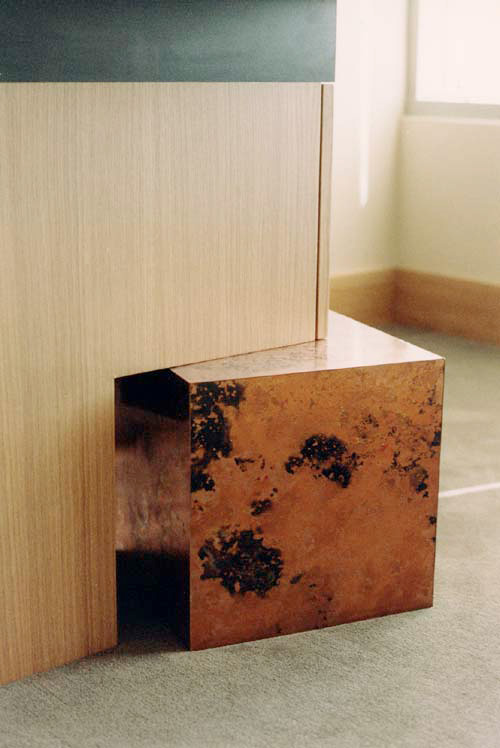Why Metal?
At the Hennessey + Ingalls Bookstore (once in Santa Monica, California), I discovered that copper could do more than turn green. An amazing book I soon purchased had photos and formulas for probably hundreds of ways this metal could be chemically treated to look black, like a rainbow, speckled, etc. It inspired me to immediately go to a sheet metal shop and have them fabricate a vat in which I could process copper sheets so that they could be used on some desks and a coffee table that I was designing for an office in Camarillo.
Later, my interest evolved to include other metals. On a project in Ojai, the fabricator, Tirzo Tec informed me of innumerable ways to finish stainless steel for a door. From the architect Michael Heinrich and artist/fabricator Gale McCall, I learned of the expressive qualities of hot rolled steel and cold rolled steel. These influences made me want to explore as many metals as I could in the metal girl series, as I wanted to see how they could affect the art I had selected.
But figuring out how to use silkscreen to etch text upon the copper I wanted to use was something I puzzled over for a long time. I recalled industrial copper etching via silkscreen at my brother’s printed circuit business, but could find no information on the internet or library for a method more suitable for an artist in a home studio. The experience of my cats killing a rat on my treasured large sheets of copper which I had placed on the carpet in my house for safe keeping made me painfully aware that copper could be easily permanently etched, even without the chemicals I personally didn’t want to squeegee through a screen. Although etching with blood might get attention and promote my art, my decision was to seek something else and something non-toxic. After scouring the refrigerator and making test samples, soy sauce beat out Grey Poupon. It had to be thickened somehow, and I hit upon the idea of making a gravy of it with corn starch in a pan on my stove. Thus, my etching process was born.
Making the metal girls was no small task as I had to make the many screens necessary for the images I wanted, and it seemed that I always needed something different than what I already had made. (The last count was fifty-five.) As I was no techie, it was a challenge to coax Adobe Illustrator to do what I wanted. And, in order to burn the screens of the size that were needed, I could find no local place to help. An agricultural grow light mounted overhead in my garage solved the problem. Because I had no darkroom, I burned the screens at night in my garage and hoped I wouldn’t be investigated on suspicion of growing pot. Printing on some of the steel was ridiculous as even the very thick sheets of emulsion I purchased couldn’t put down enough paint to show well. Sometimes I had to overprint three times. Crazy to do the whole thing? Yes, I agree.

